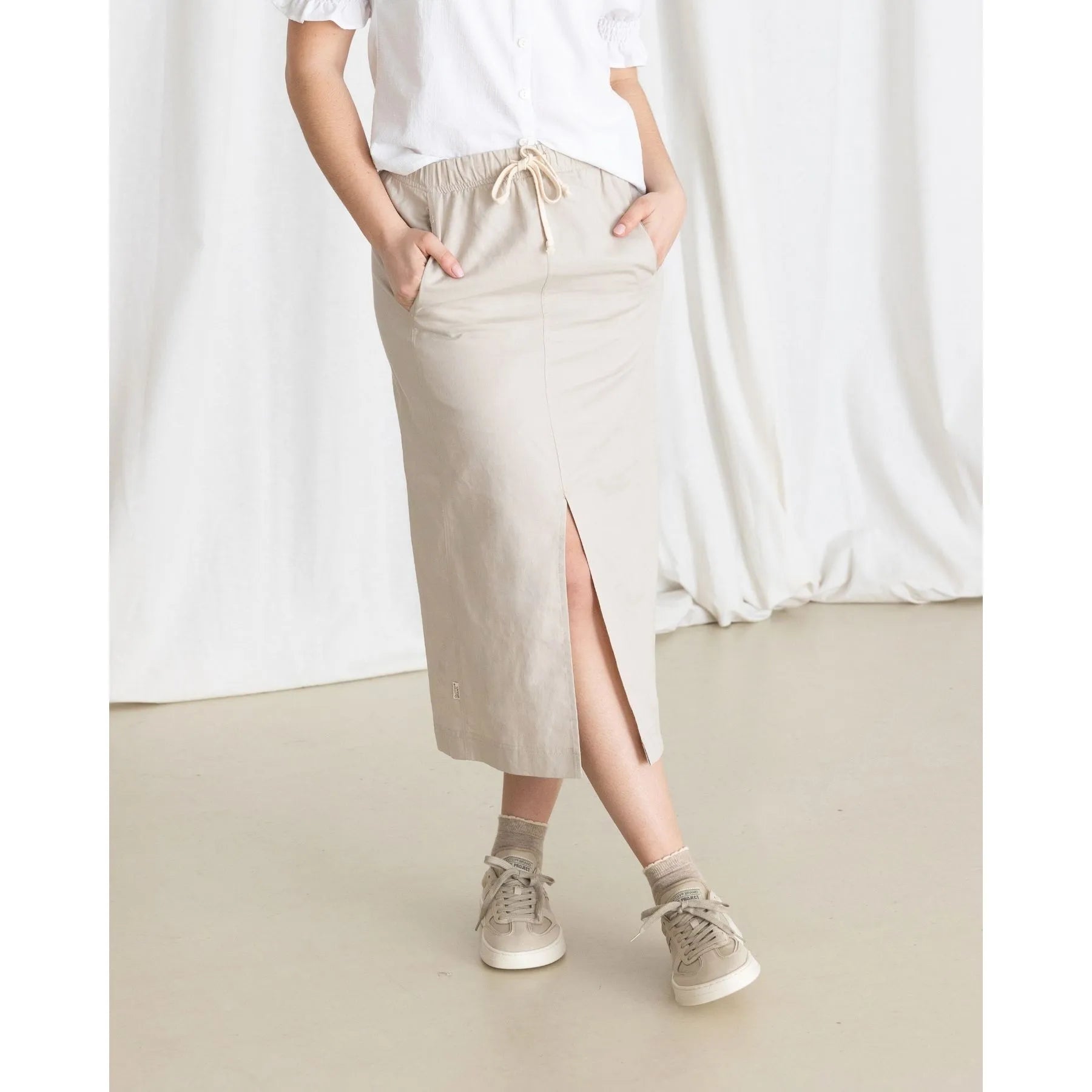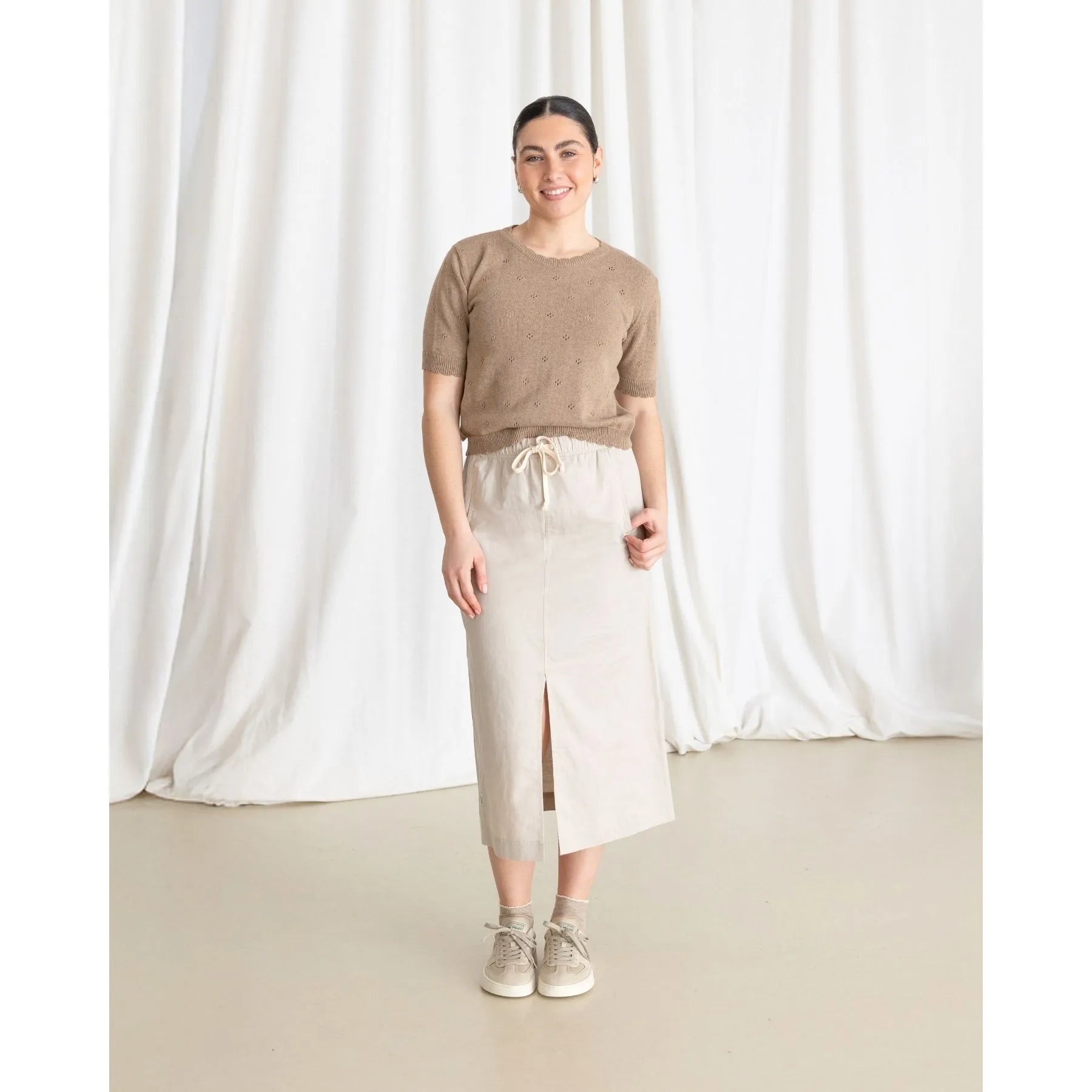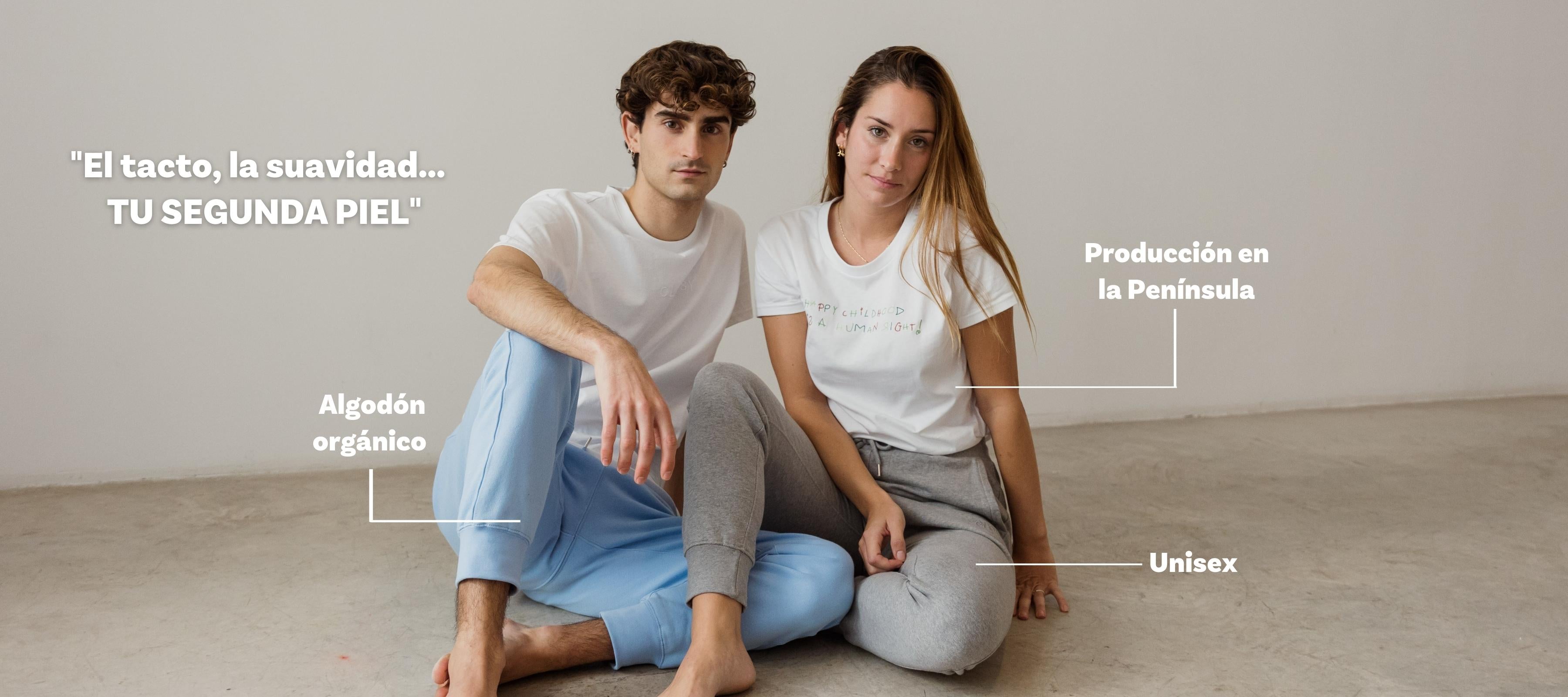Sustainable fashion is a trend-setting alternative that is becoming increasingly popular. Now people not only want to be fashionable, but they also want to do so while taking care of the planet and the environment. More and more brands are joining this change due to the strong demand of the new generations, from multinational fashion brands to small brands like Clotsy Brand that fight for a conscious fashion, taking care of people and the planet.
In the beginning there was not much projection, because why pay more for a pair of trousers when you could pay as little as possible? This has come to an end. People are starting to ask themselves: What is behind each garment, under what conditions and with what materials has this garment been produced? Even if it means paying more for a garment. Thus, more and more people follow their values and are willing, not to pay more for the same garment, but to invest in a quality garment that will last them for a long period of time. Celebrities and celebrities such as: Emma Watson, Meghan Markle, Anne Hathaway, Leonardo Dicaprio, Michelle Obama, George Clonney, Jon Bon Jovi or Alejandro Sanz have already started to be part of the cause.
In this article we are going to see what sustainable, ecological or sustainable fashion is all about, what are the characteristics that a garment must meet to be considered sustainable and what can consumers do. Keep reading and we will tell you all about it!
What is sustainable fashion or ecological fashion?
Sustainable fashion or ecological fashion is a form of textile production that aims to develop garments for responsible consumption, with awareness and respect for the conservation of the environment, animals and people. Sustainable fashion has several purposes: to reduce the environmental impact in the elaboration of the product, to put an end to the exploitation of many workers in the fast fashion industry and also to preserve the right to life and health of animals and people on the planet.
In addition, for garments to be sustainable, they must primarily move away from two characteristics that have been imposed for centuries:
- The overexploitation of the planet's resources.
- The semi-slavery conditions in which the people who sew in countries such as Bangladesh or India find themselves.
These bad practices in the industry began to take place at the end of the 1980s, when protests and denunciations were made by activists who became aware of the use of materials that were harmful to health during the making of garments and the exploitation suffered by employees in order to meet the high demand of the time.
This sentiment was accentuated after the Rana Plaza incident, a building that housed a garment workshop that sewed for big brands such as Primark and Inditex, which ended up collapsing due to the conditions of the building. After this episode, a struggle began to eradicate these practices (which are very present nowadays) in the world of fashion.
Sustainable fashion strives to produce garments respecting the conditions of workers throughout the production chain and reducing the environmental impact as much as possible, avoiding the use of chemicals and pesticides when it comes to obtaining raw materials.
Why is sustainable fashion important?
Sustainable fashion, as we have said before, owes its importance to a series of factors that complement us as a society and for which, in some way, we are responsible:
Quality in the materials used for manufacturing
The quality of the materials used during manufacturing will mainly guarantee the durability of the garment, thus avoiding having to produce new garments because they break quickly.
Much slower production times
Slow fashion or slow production is a term that started to be used as the counterpart of the expression fast fashion, which refers to the increase of clothing collections throughout the year, reaching up to 16 collections per season. Slow fashion, on the other hand, is a term used to refer to the production of two collections per season: autumn/winter and spring/summer.
Eradicating labour exploitation in the sector
One of the reasons for the emergence of sustainable clothing was to respect the human rights of the workers who were part of this industry. Countries such as China, India, Bangladesh, Zambia, Benin, Egypt, Turkey or even Morocco use child and forced labour to carry out the various activities in the textile manufacturing process.
Preservation of animals
Important brands use animal skins to make their garments, a fact that caused the extinction of many species. Nowadays, we can see how important design houses have made a change, opting for cruelty free materials and being able to respect the life of the animal, as well as its habitat.
Consumer health safety
The dyeing and treatment of some fabrics carries chemical components that are dangerous to the human body. This added to the fact that, during the manufacturing process, residues of these pollutants are spread on land, water and air, in addition to the excessive use of some vital resources, for example, approximately 7500 litres of water are consumed in the production of jeans.
How to recognize sustainable fashion?
Due to the great boom that sustainable fashion is having, it has become recurrent to find manufacturers that use mechanisms to sell their garments as ecofriendly clothing. Here are some recommendations that you can take into account when buying options for your closet and make a good choice.
Seeks certification of garments
There are several certifications with which you can identify a sustainable garment. Some of these focus on the material, others on the manufacturing process or both, the most common are: GOTS, PETA, Ecolabel, Blusign, GRS ...
If recycled material is used
Many of the organizations mentioned above record on the label whether the garments have been made with some type of recycled material.
Avoid synthetic fibers and blends.
In many cases, especially to reduce production costs, synthetic fibers are used, either in their entirety or mixed with other fibers. We always recommend avoiding this type of fibers and using other natural fibers, such as organic cotton clothing, linen clothing, tencel... In addition to being garments that transpire much better and, therefore, self-regulate body temperature, we will be avoiding the release of thousands of microplastics into the sea.
Local and national production
The only way to guarantee decent working conditions for garment manufacturers is to produce in countries that protect workers. So we will always choose garments produced in the European Union over other countries such as Morocco, Bangladesh... Some garments carry seals "guaranteeing" optimal working conditions in countries like Bangladesh, but be careful because these same factories end up subcontracting to other factories with subhuman conditions.
Sustainable materials
For a garment to be sustainable, it must have mainly organic and recycled quality materials. Sustainable fabrics are the new proposal in the fashion world, each one has specific characteristics to adapt to different designs. Let's get to know the most famous ones.
Organic cotton
Organic cotton is one of the most widely used materials for the manufacture of ecological garments. This is because this fiber represents a minimal impact on the environment, both for its production and its use. Cotton, unlike other types of fibers, is breathable and offers a quality and durability that makes it one of the best options when choosing a garment.
As it is grown and cared for without the use of any pesticides or chemicals, organic cotton becomes a healthy alternative for the skin, a characteristic that differentiates it from the cotton we know traditionally.
Recycled cotton
Recycled cotton is also known as recovered cotton, and as its name indicates, it is cotton that comes from waste, both pre-consumer and post-consumer.
Recycled cotton allows to give a new use to the garment that is no longer wanted. For this to happen, a demanding work must be carried out, which begins by separating the fabrics according to their color and then taking them to a machine that is responsible for shredding them until they are converted back into fiber. Although these do not retain their initial quality, since in the cotton shredding process the fibers withstand a lot of pressure and end up breaking, it is an interesting option to integrate with other fibers.
Bamboo
The production of the fabric with bamboo is one of the most rigorous processes, but we guarantee that the final result is worth it. This fiber is obtained by crushing and fermenting the well-known bamboo plant until it reaches a doughy and homogeneous texture, which is then treated for spinning, weaving and dyeing, ending with the manufacture of the garment.
Although initially, bamboo was not widely used for sustainable fashion, its antibacterial and antifungal properties quickly made it one of the most skin-friendly organic fibers. Ecological, sustainable, resistant and biodegradable are the words that represent this natural fabric.
Hemp
This vegetable fiber, like bamboo, is currently among the favorites for sustainable garments. Much is said about the diversity it offers for use, strength and comfort for the skin, and some have even claimed that it could replace fabrics such as silk, linen and even cotton.
Hemp is obtained from the stalks of the Cannabis Sativa plant, and is among the natural fibers that do not require pesticides or other chemical elements for planting, which makes it a friendly alternative for the skin and the environment.
Plastic and recycled materials
Recycled plastic and other materials such as nylon, tires, pineapple leaves or recycled mattresses like these Recycled Flip Flops are considered as main materials for the manufacture of garments and footwear. Brands are focusing more and more on this green trend that seeks to preserve the planet and respect the right to life.
This type of materials have been one of the main pollution problems and seeing how they are now being given a second chance to be used is undoubtedly a great step forward for the planet.
Recycling and circular economy
For a long time we have been immersed in a "linear" lifestyle in which we exploit, extract and destroy nature's resources to give it a reduced useful life in fashion. Today we can see how working hand in hand, suppliers and consumers manage to change this pattern to a much more sustainable fashion, circular economy and recycling model.
The call for recycling and circular economy is to strengthen the terms reduce, reuse and recycle to reintroduce the pieces back into the production system, which not only allows the conservation of the environment, but also reduces the economic impact that many manufacturing processes cause.
What can consumers do?
Be aware of your purchasing habits
Change starts with the individual. The best way to do things right is to learn as much as possible about this trend. It is not about rushing out to acquire a sustainable lifestyle, it is about being informed, reading, being able to exchange ideas and be inspired by people or communities that already have this type of sustainable purchasing habits. Make permanent, not transitory, choices. Small steps every day make a big change.
Quality not quantity
This is the most important question, is it really necessary to change closet every month and buy so many clothes? Get a comfortable and versatile capsule closet that allows you to combine the same garment with several styles and are of good quality.
Natural fibers are always better than polymers
As much as possible avoid using clothes that contain polymers among its materials, instead, opt for light and fresh pieces with natural fibers that feel better to the body.
Designs that respect labor
Currently there are many sustainable brands that are focusing on textile work in which the conditions of the worker are respected. Choose garments that reflect and prioritize this respect. If they provide transparency throughout the production chain, it is a big plus in your favor. Modern, quality garments made with high standards of respect, both for the planet and for workers and consumers is the main focus.
Conclusion
Today, sustainability in all aspects of our lives is a much needed topic and the fashion world could not be left behind. Although it is hard to believe, this industry is the second most polluting. Changing the strategy with which it has worked for decades is, more than a duty, a necessity to preserve the environment and that which sustains it.
The trend towards sustainable living is more than clear. Consumers are now looking for fashionable choices that also care for the planet. With sustainable fashion brands committed to people, animals and the planet.


















Leave a comment